Asus Zenfone 9
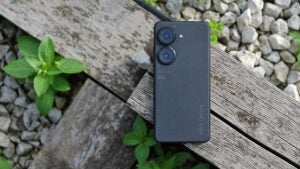

Still the best small-sized phone on the market in 2023, the Asus Zenfone 9 delivers excellent performance and highly capable camera hardware. However, there are a few minor gripes that let it down, including charging speed, image processing, and its thickness.
Pros
- Small footprint
- Top-tier processor
- Very high quality camera hardware
- Has a headphone jack
Cons
- The finish does not seem hard-wearing
- Charging is a little slow
- Camera image processing lags behind the best
Availability
- UKRRP: £699
- USARRP: $699
- EuropeRRP: €799
- CanadaTBC
- AustraliaTBC
Key Features
- Petite size Measuring just 146.5 x 68.1 x 9.1mm (and weighing only 169g), this phone is noticeably smaller than most other full-size flagships
- High-spec screenDespite only being small, the Super AMOLED display can still boast a 120Hz refresh rate, HDR10+ support, and a sharp 1080x2400p resolution
- 50-megapixel main cameraThe phone’s main camera sensor has a very high resolution
Introduction
Still the best small-sized phone on the market in 2023, the Asus Zenfone 9 delivers excellent performance and highly capable camera hardware. However, there are a few minor gripes that let it down, including charging speed, image processing, and its thickness.
Design and Screen
- It’s a small but thick brick
- Unusual roughened-but-soft finish
- Bold and bright OLED display with good outdoor visibility
The Asus Zenfone 9 is an unusual-looking phone. It has a small footprint, but the camera lenses on the back are massive, like the eyes of one of those yellow Minions characters.
It is also by no means thin at 9.1mm thick. And that doesn’t appear to be the measurement of the most sticky-outy camera lens either, just the main body.
The Zenfone 9 is light and not a handful, but it is not quite sleek and slender like some of the other small phones you might look into. However, this fits with Asus’s style. It has never been a household phone brand in the US, UK, or Europe, and its biggest successes have arguably been models such as the ROG Phone 6 Pro that would appeal to the nerdy crowd who might like its RoG gaming PCs.
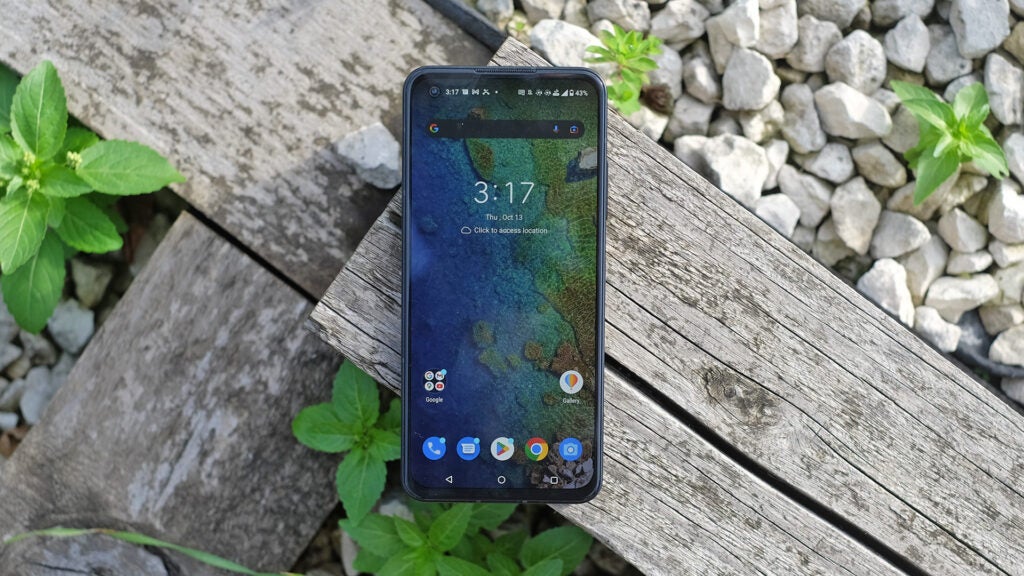
The rear finish is unusual here too. At the price you might hope to see glass, perhaps aluminium, but Asus used a “polymer” in the Zenfone 9. I usually take this as a marketing spin on “plastic” but the Zenfone 9’s rear does have an unusual feel to it. It’s softer than a regular plastic, but isn’t rubberised.
I guess the aim is to give the Zenfone 9 a sort of furitistic industrial feel, something that isn’t glass or aluminium but doesn’t feel cheap. However, I do have some worries about how it will hold up long term. You can put a mark in it with a relatively light graze of a fingernail. And while you can rub out inconsistencies in the finish, easy-wear surfaces rarely age that well.
Asus does bundle in a rear cover, but it is simple plastic and does not feel as good. Still, you should probably use it.
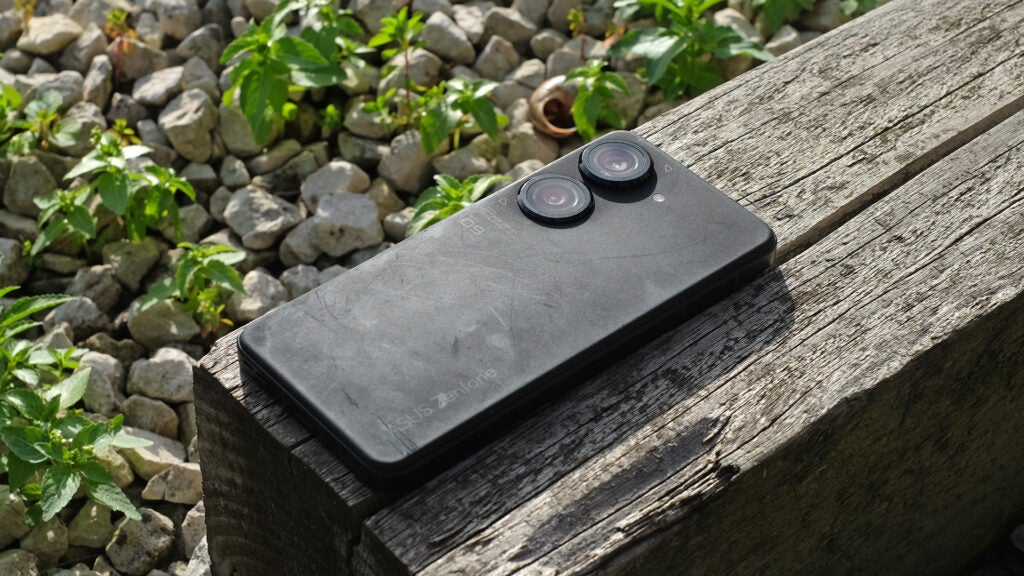
There are lot of great features to be found in this phone’s hardware. For starters, it has a headphone jack; a rarity these days. It also has stereo speakers, ones with excellent performance for a smaller phone. There’s one driver above the screen, and another at the bottom, and they are roughly matched, tonally. Sometimes you get a bassy speaker and a tinny one, but that’s fortunately avoided in this case. Maximum volume is good, and there’s a decent substance here.
The Zenfone 9 is water resistant to IP68, the highest rating you’ll find in a “normal” phone, and there’s a fast fingerprint on the side. The display glass is top-tier Gorilla Glass Victus, so it’s built to be resistant to scratches.
This is a nicely designed and unusual phone, but one potential drawback that I can see is the corners of its plastic rear panel turning glossy through wear.
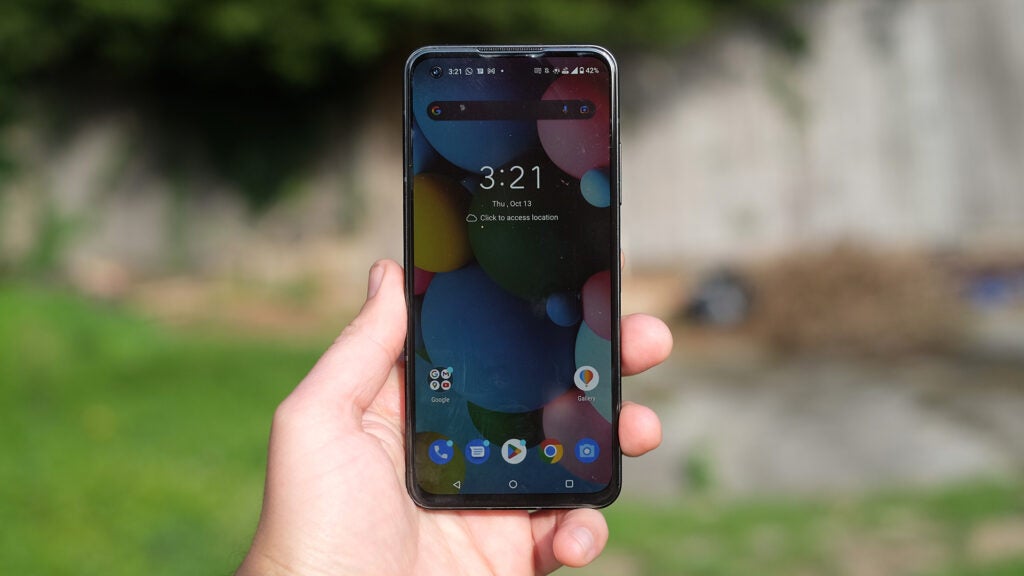
The Asus Zenfone 9 is a smaller phone, so naturally doesn’t have a giant screen. It’s a 5.9-inch OLED panel, a flat one with resolution of 2400 x 1080 pixels. The screen borders are small, and the panel is flat. It’s still the smallest panel around in 2023, with most other Android makers seemingly shunning anything less than 6.1 inches.
There’s nothing here to immediately signal you spent more money on the Zenfone, but this is largely because just about all £200-plus phones have excellent screens these days. For example, you can get comparable specs for far less money in mobiles like the Xiaomi Redmi Note 11 Pro.
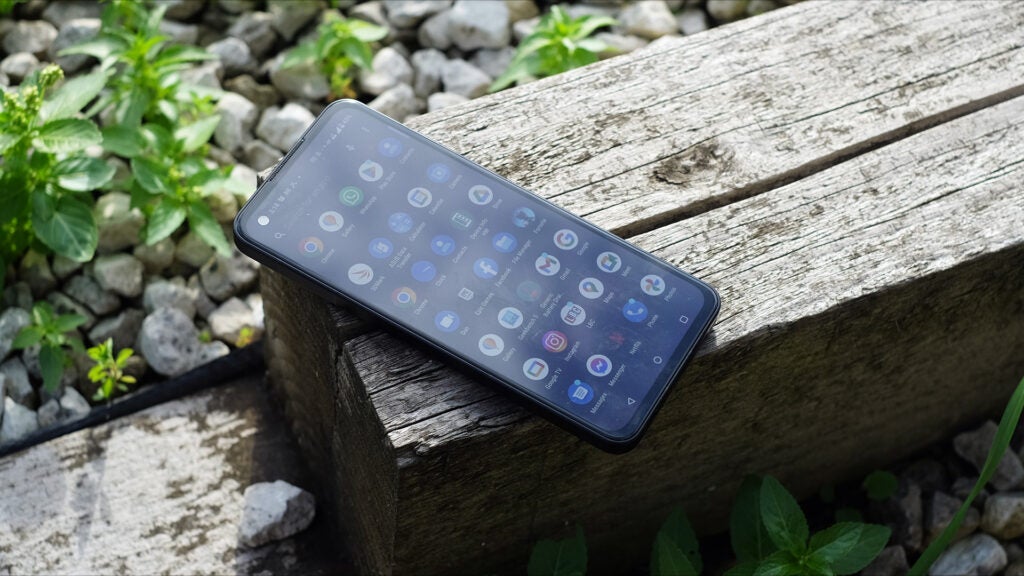
Asus claims the Zenfone 9 can reach 1100 nits of brightness. But does it? In a normally lit room the phone will head up to around 442 nits of brightness. And in its turbo-charged high brightness mode it can hit 805 nits. This is a very healthy figure, enough to make outdoors visibility largely a non-issue. The high brightness mode will engage automatically when you head outdoors on a bright day.
It’s a good-looking, colour-rich and contrasty screen. The small size makes it easier to stretch your thumb across too, and Asus lets you use the Zenfone 9’s power button to pull down the notification window if you like, thanks to a feature called ZenTouch, where the capacitive properties of the fingerprint reader allow it to double as a touch surface.
Camera
- Great-quality hardware across the board
- Good general image quality including at night
- Some of the finer points of image processing could be improved
You can’t miss the Zenfone 9’s cameras, sitting right there on the back behind a pair of coke bottle glasses. As you can tell from there being just two cameras, Asus has not loaded up this phone with sensors just to make it look smart.
The primary camera has a 50MP IMX766 sensor, a large chip that Asus has used before in the Asus RoG Phone 6. OPPO also employed it in the top-tier Oppo Find X5 Pro. The ultra-wide camera uses the Sony IMX363, which was the brains of the main camera in the much-lauded Pixel 5. And the selfie camera uses the Sony IMX663.
Asus was clearly going for it with the Zenfone 9 camera, using all-Sony sensors when cost-conscious models typically throw in some Omnvision or Samsung hardware, at the least. However, in another sense Asus has held back; the Zenfone 9 has no zoom camera. Fitting one in a phone this small would be a challenge, and would no double increase costs dramatically, but it’s the one missing part of what is otherwise an impressive set of bits of hardware.
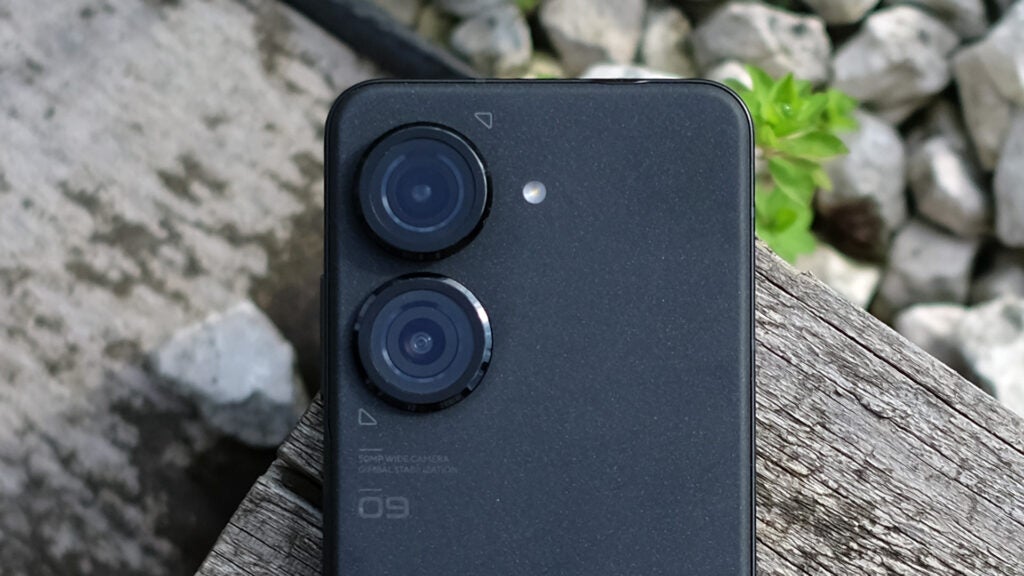
Asus uses A-grade sensors, and while it doesn’t quite have the software to avoid criticism entirely, the end result is still a super-capable and fun-to-use camera.
The first great Zenfone 9 feature is how the unusually high-quality ultra-wide camera means there’s no obvious quality compromise when you switch lenses, even when shooting in poorer light. Degradation of the image at the corners is better than average, lens distortion is automatically corrected, and ultra-wide shots hold up to close scrutiny pretty well.
A high-quality ultra-wide with geometric distortion correction means it’s not always immediately obvious which camera any shot was taken with (and that’s a good thing), as you can see from the pictures below:
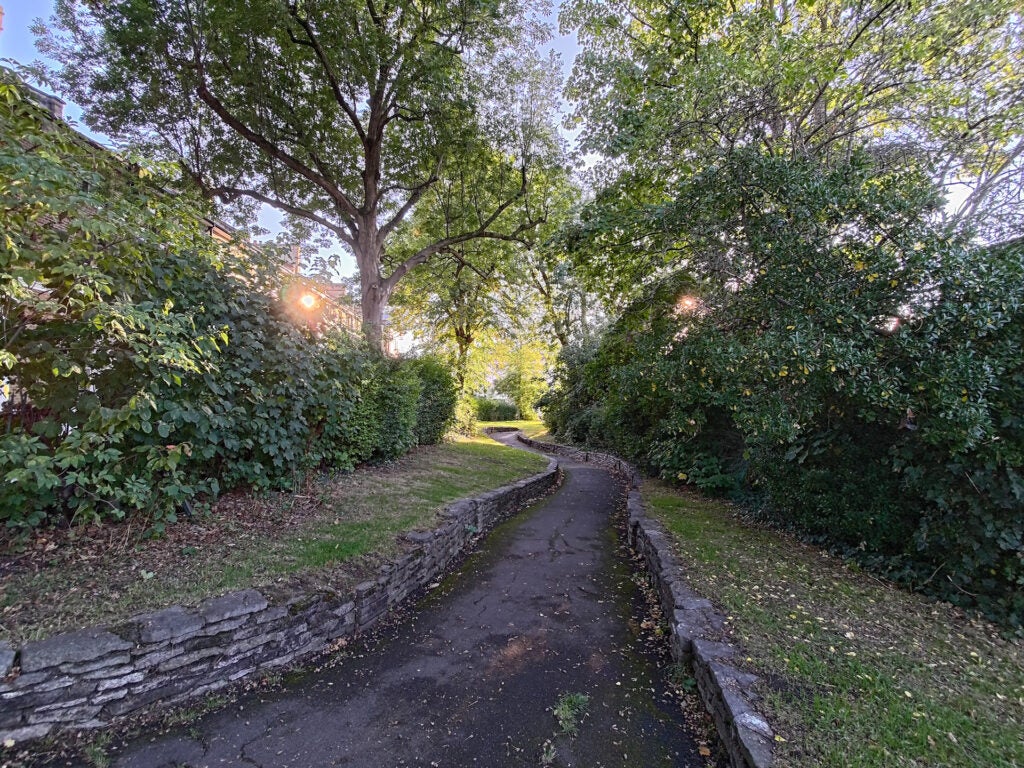



“Gimbal” stabilisation is Asus’s second star feature. This refers to super-charged optical image stabilisation, matched with software stabilisation. It can compensate for up to three degrees of motion, and you can clearly see the lens moving when the camera app is open.
This is most useful when shooting video, as stabilisation just isn’t that necessary during the day, and at night software does a lot of the legwork. While I don’t find the stabilisation miles better than that of some flagship phones, it is at that level. And its hardware-based nature means even the Zenfone 9’s top shooting mode gets some form of stabilisation — that’s a whopping 8K resolution (at 24fps) in this case.
The Zenfone 9’s video is strong across the board. 4K video at 60fps is my preferred mode. It’s smooth, sharp and clean. You can even shoot HDR video if you drop down to 30fps.
1080p footage does not look overly soft, as it often can do in phones. And while I don’t think the 8K mode is worth using that often over 4K thanks to the reduced motion clarity, and increased image and colour noise, the stabilisation makes it more usable than plenty of 8K modes I’ve used to date. Nice job, Asus.
Let’s head back to stills. The Asus Zenfone 9 can handle pretty much any situation. It maintains foreground clarity when shooting into the sun. At night the high-quality sensor and OIS pay off, netting you clean and clear images whether you use the dedicated night mode or not. They don’t take an arduous amount of time to capture either.
Perceived detail from both the standard and ultra-wide lenses is good and the Asus Zenfone 9 is better at preserving highlights in many scenes than the Motorola Edge 30 Fusion I came from using a week or so ahead of this review.


There are a few quirks, mostly related to processing. The Asus Zenfone 9 does not have class-leading colour handling. While tones don’t look comically oversaturated, the phone will at times clip colour channels when, for example, shooting a bright red flower.
Look at images down to the pixel level and you’ll notice the Zenfone 9 has less natural-looking detail processing than an iPhone, Pixel or one of the very best Samsungs. I think Asus’s has tuned the “AI” texture rendering too hard. Look close at a gravel path and the patina of its surface will often look “made up”. Because it kinda is. And far away trees and leaves won’t look as natural as they could do, close up.
This is the kind of processing style Samsung has largely weaned itself off over the years, and Asus’s style still has some maturing to do. However, this is not all that evident until you look close, so is only going to be a major issue when you start cropping into pics.
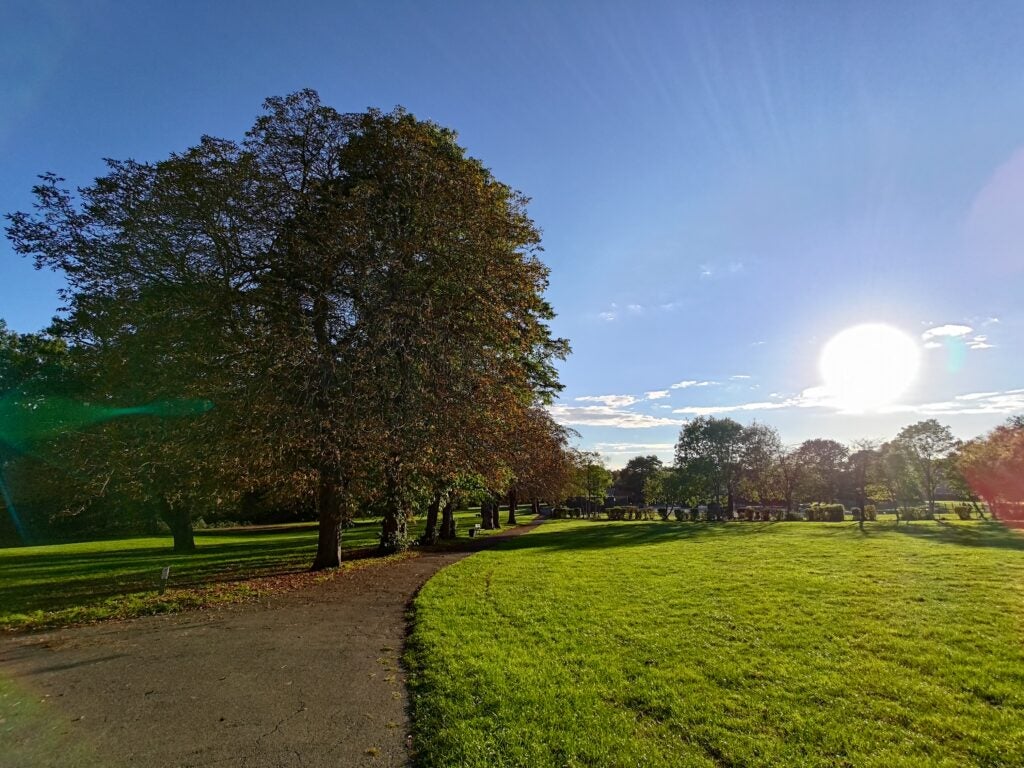
In the above image, you can see the big blob sun effect caused by the Asus’s take on HDR tuning
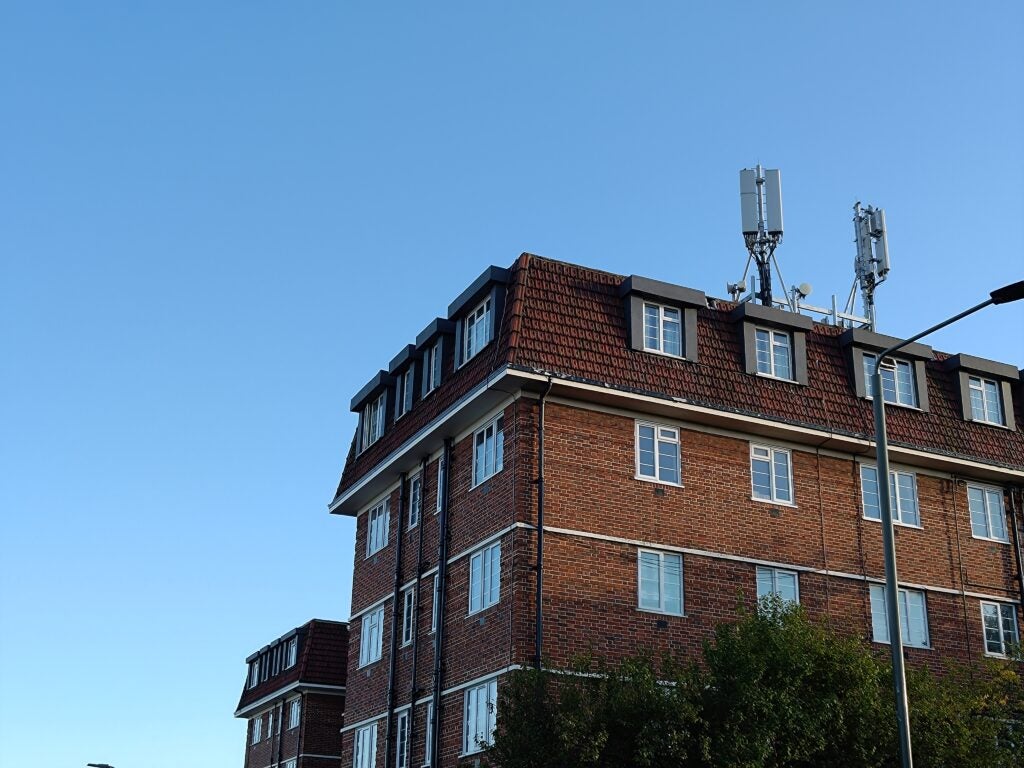
The above photo was shot with 2x digital zoom.

The side-effects of the HDR style are going to be more obvious. This phone tries a little less hard to retain extreme highlights in very high light contrast scenes than many. You can see this when you shoot directly Into the sun. Where some phones will render the sun as a little dot, it becomes a bigger white splodge through the Zenfone 9. The rest of the scene will generally look great, with exemplary mid-tone clarity and pretty good handling of colour in these extreme conditions. But, again, Asus’s software isn’t quite top-tier.
There’s also a wee bit of shutter lag in the Zenfone 9. It’s not a perfect camera, and some of its heights aren’t that far off those of the cheaper Pixel 6a or OnePlus Nord 2T. However, the consistent high level of quality in the hardware is impressive.
The Zenfone 9’s selfie camera is great too, for example. It can deal with poor light and backlight scenes while retaining a lot of fine detail. And it can’t hurt than the selfie camera has relatively large 1.22 micron sensor pixels.
Performance
- Powerful processor with no greater throttling than larger models
- Good for gaming, although a little small for the job
- Unfussy custom interface
The Zenfone 9 ran Android 12 out of the box at launch with a custom interface on top, though it received the update to Android 13 in 2023.
At first glance I thought its app drawer looked a bit cramped, a little text-heavy; but this is really just a knock-on effect of the screen size. Five columns of icons into a 5.9-inch screen is a higher density than your eyes may be accustomed to, and it can take a bit of getting used to.
I’m pleased to report that there’s nothing too offensive going on here, software-wise. The interface is light enough to show off Android features like the colourful feature toggle blobs. You can alter the colour of these — things like the Wi-Fi toggle button — to change the look of your phone a little.
A lot of the initial Asus visual flavour is really just down to the rather bold Zenfone 9 preinstalled animated wallpaper. Changing it to something static, less abrasive, takes the edge off and makes the Zenfone feel much closer to the experience of using a Pixel phone.
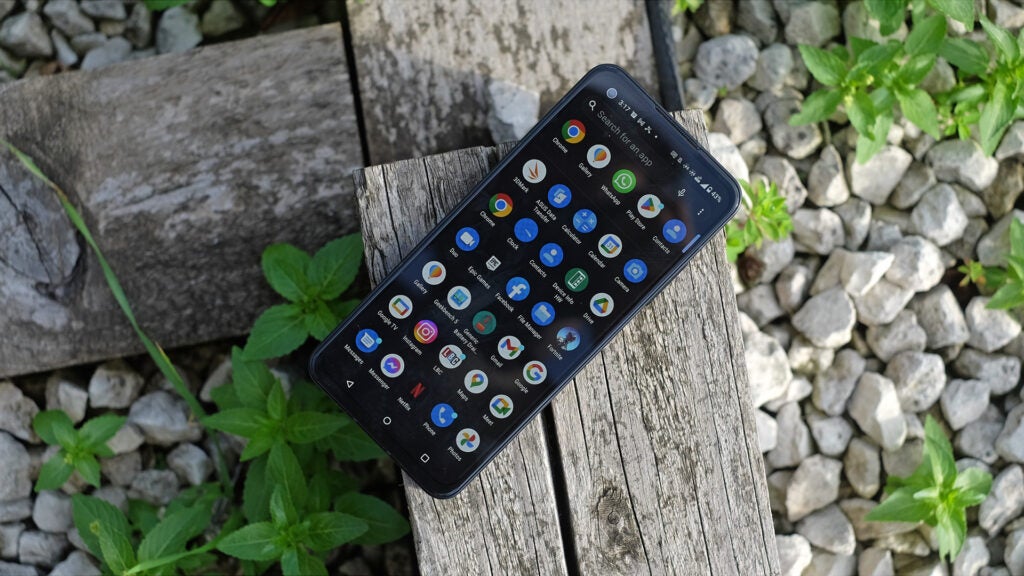
The Asus Zenfone 9 had the best phone processors in the world at the time of release. It’s the Qualcomm Snapdragon 8 Plus Gen 1, a follow-up to the “non plus” Snapdragon 8 Gen 1.
This is a higher-clocked chipset, but is also made using a different manufacturing process that Qualcomm claims dramatically improves power efficiency. After being initially impressed by the original Snapdragon 8 Gen 1’s benchmark results, I think it has proved to be a bit of a dud. It causes a lot of device heat-up in every phone I’ve used, resulting in thermal throttling that means you won’t always get dramatically better real-world gaming results after a while than a mid-tier chipset like the Snapdragon 870 or MediaTek Dimensity 1300.
Where most of the Snapdragon 8 Gen 1 phones I’ve used end up with under half their peak gaming power after a while, the Asus Zenfone 9 holds on to 75.2% according to 3D Mark’s Wild Life Extreme benchmark. Asus does seem to have tailored this phone for performance, though, as the aluminium sides did get quite toasty by the end of this 20-minute test.
Peak graphics performance is also around 27% higher than that of a Snapdragon 8 Gen 1 phone like the Galaxy S22 Ultra. It still can’t match the iPhone 14’s A16 Bionic, though. But that phone is £150 more than the original price of the Zenfone 9. Still, it’s going to sail through any game you might choose to play — although I’d suggest considering a larger-screen phone if you are mobile gaming obsessive.
It is worth noting that the Snapdragon 8 Plus Gen 1 has been replaced by the even newer Snapdragon 8 Gen 2 used by many 2023 flagships, but you’ll be hard-pressed to see a difference in performance in real-world conditions, making it just as tempting in 2023 as it was in 2022.
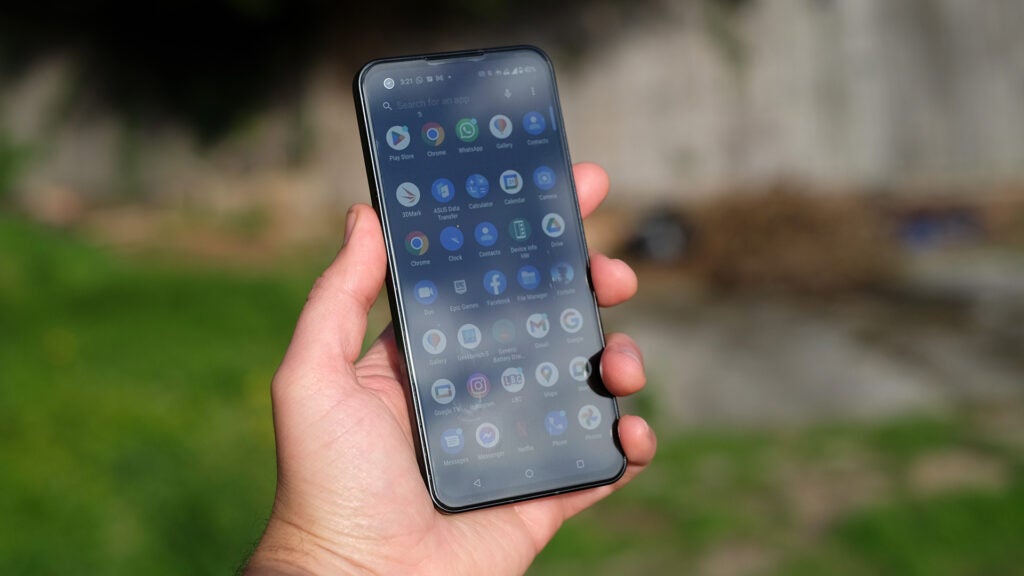
Battery
- Charging is on the slow side
- Decent stamina for a small phone
- No wireless charging
The Asus Zenfone 9 has a 4300mAh battery, a perfect fine capacity for its size. But it’s shown up by the Sony Xperia 10 IV, which fits a 5000mAh battery into a narrower and thinner (if taller) shell.
Its charging speed is also quite poor compared to that of the other Chinese brands you might head to with this much money to spend: OnePlus, Xiaomi and so on. The Zenfone 9 includes a 30W charger but, using a power meter to check the power draw, the rate heads all over the place during a charge cycle.

The Asus Zenfone 9 takes 84 minutes to reach 100% charge, and 33 minutes to hit 50%. It’s a bit rubbish when you consider a full charge of the OnePlus 10T takes less than 20 minutes.
Actual battery life is a non-event in review terms. It’s not brilliant, it’s not bad. I found I can get through a day, no problem, but not with enough charge to make plugging the phone in, say, every other day a viable proposition.
It is nowhere near as long-lasting as the Sony Xperia 10 IV, a phone I otherwise don’t like nearly as much as the Zenfone 9, and is closer to the OnePlus Nord 2T in stamina terms.
Latest deals
Should you buy it?
The Asus Zenfone 9 is a classic pocket powerhouse Android phone, combining a small frame with top-tier power, advanced camera tech and quality components throughout.
While the phone performs well in almost every area, a few finer points like camera processing, charging speed and its thickness are small disappointments
Final Thoughts
The Asus Zenfone 9 is still the best small “pocket rocket” phone for demanding buyers, even almost a year after its initial release. It’s the most compact Android you’ll find, it’s not overpriced, is very powerful, it looks distinctive, and Asus uses high-quality camera hardware across the board.
There are a few issues. I’m not persuaded the rear finish is going to age well. Asus’ camera processing isn’t as refined as the best. Charging speed is not great. And some won’t like that the Zenfone 9 is dramatically chunkier than, say, the iPhone SE.
However, it’s a singular phone, not quite like anything else out there right now. And that is worth celebrating in itself.
How we test
We test every mobile phone we review thoroughly. We use industry standard tests to compare features properly and we use the phone as our main device over the review period. We’ll always tell you what we find and we never, ever, accept money to review a product.
Used as our main handset during test period
Camera tested in variety of situations with all modes
Tested with synthetic benchmarks and real world use
FAQs
It has IP68 water resistance, about as close to waterproof as you’ll get in a mainstream phone.
Memory is non-expandable, but the upgrade to 256GB is relatively affordable.
It does have a headphone jack, unlike the vast majority of phones of its class.
Trusted Reviews test data
Sustainability
TrustedReviews’ holds the fact that global warming is not a myth as a core value and will continuously endeavor to help protect our planet from harm in its business practices.
As part of this mission, whenever we review a product we send the company a series of questions to help us gauge and make transparent the impact the device has on the environment.
We currently haven’t received answers to the questions on this product, but will update this page the moment we do. You can see a detailed breakdown of the questions we ask and why in our sustainability info page.
The post Asus Zenfone 9 appeared first on Trusted Reviews.
Source Trusted Reviews ,Home Appliances Reviews

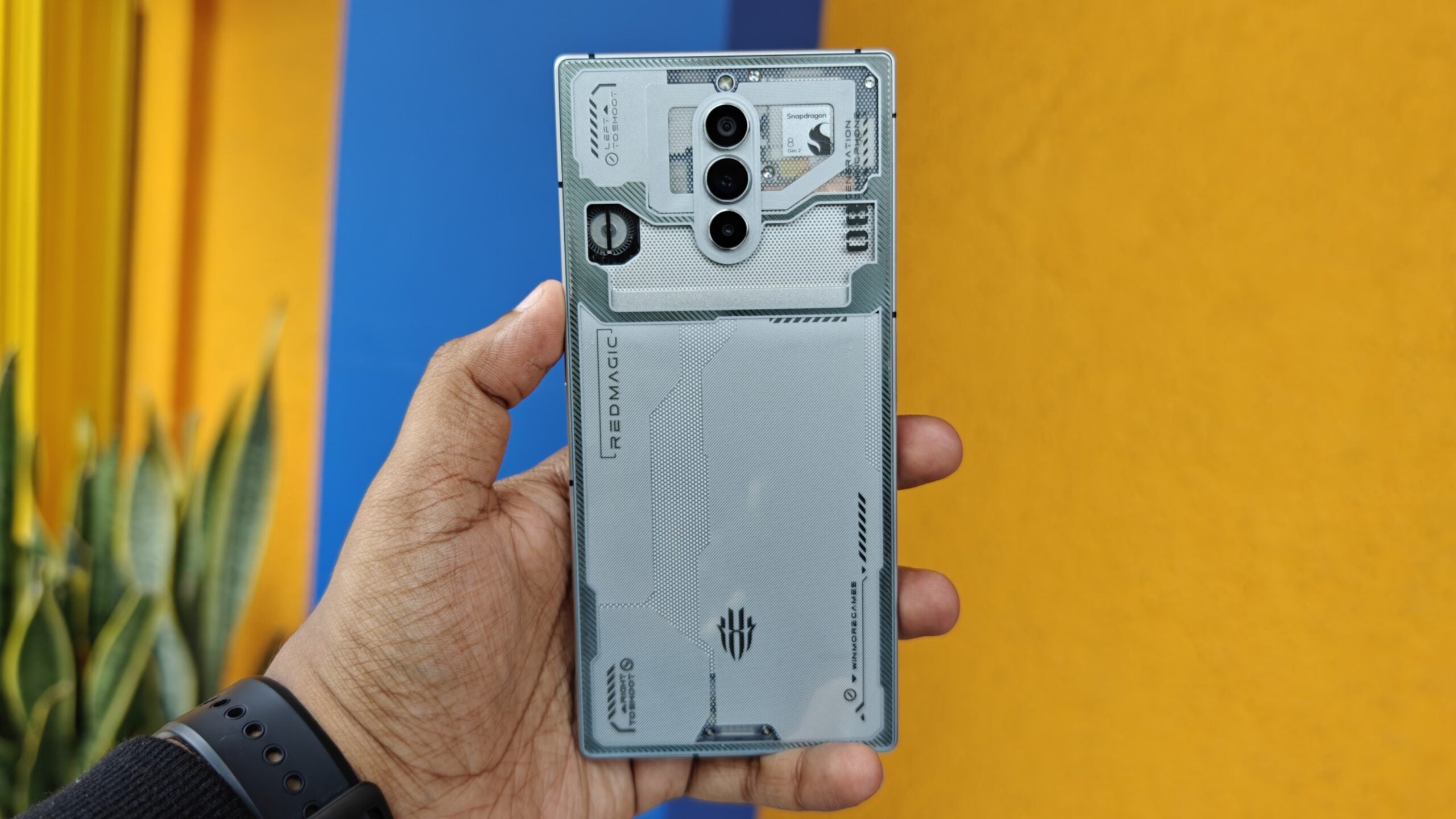
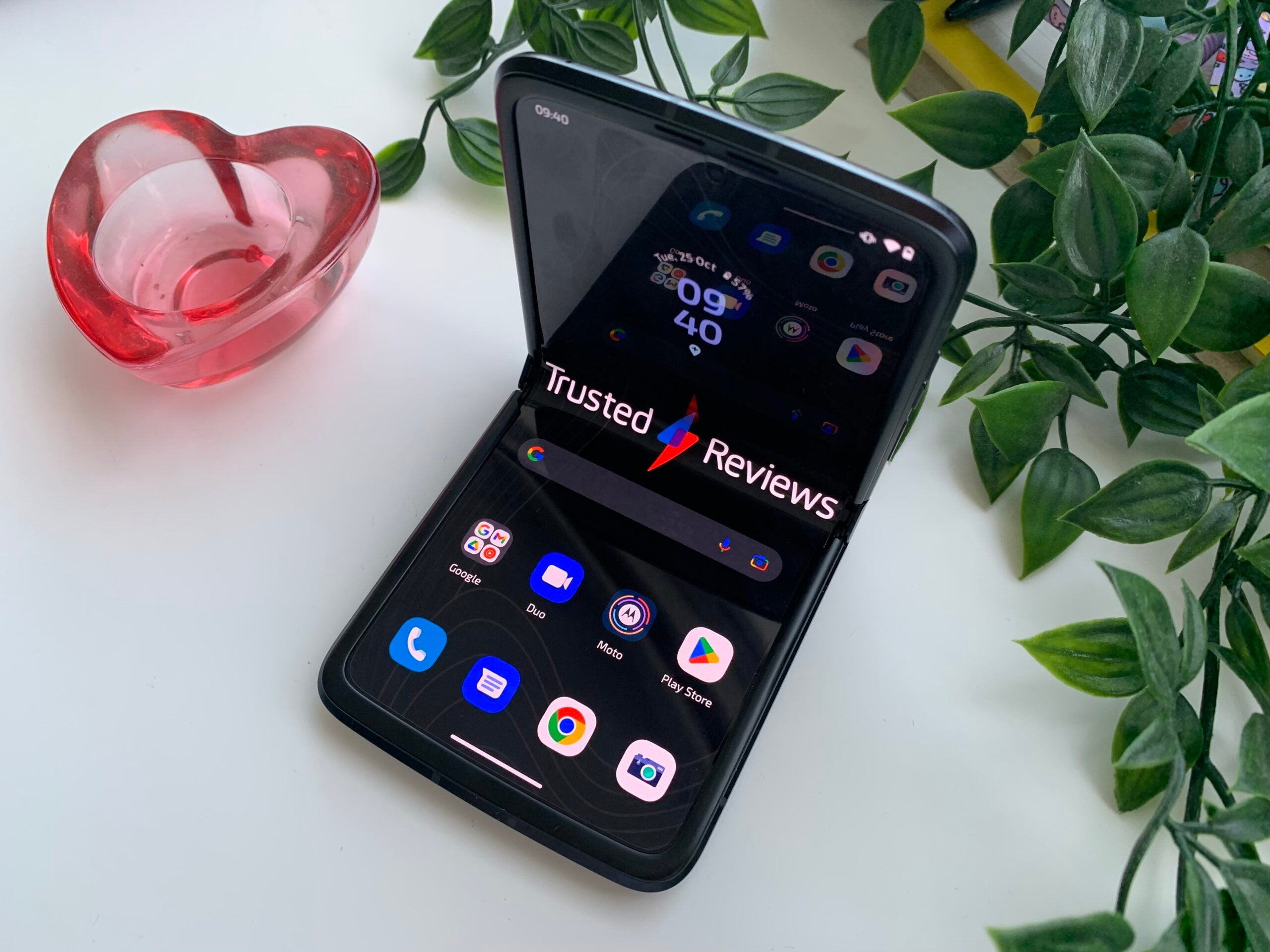
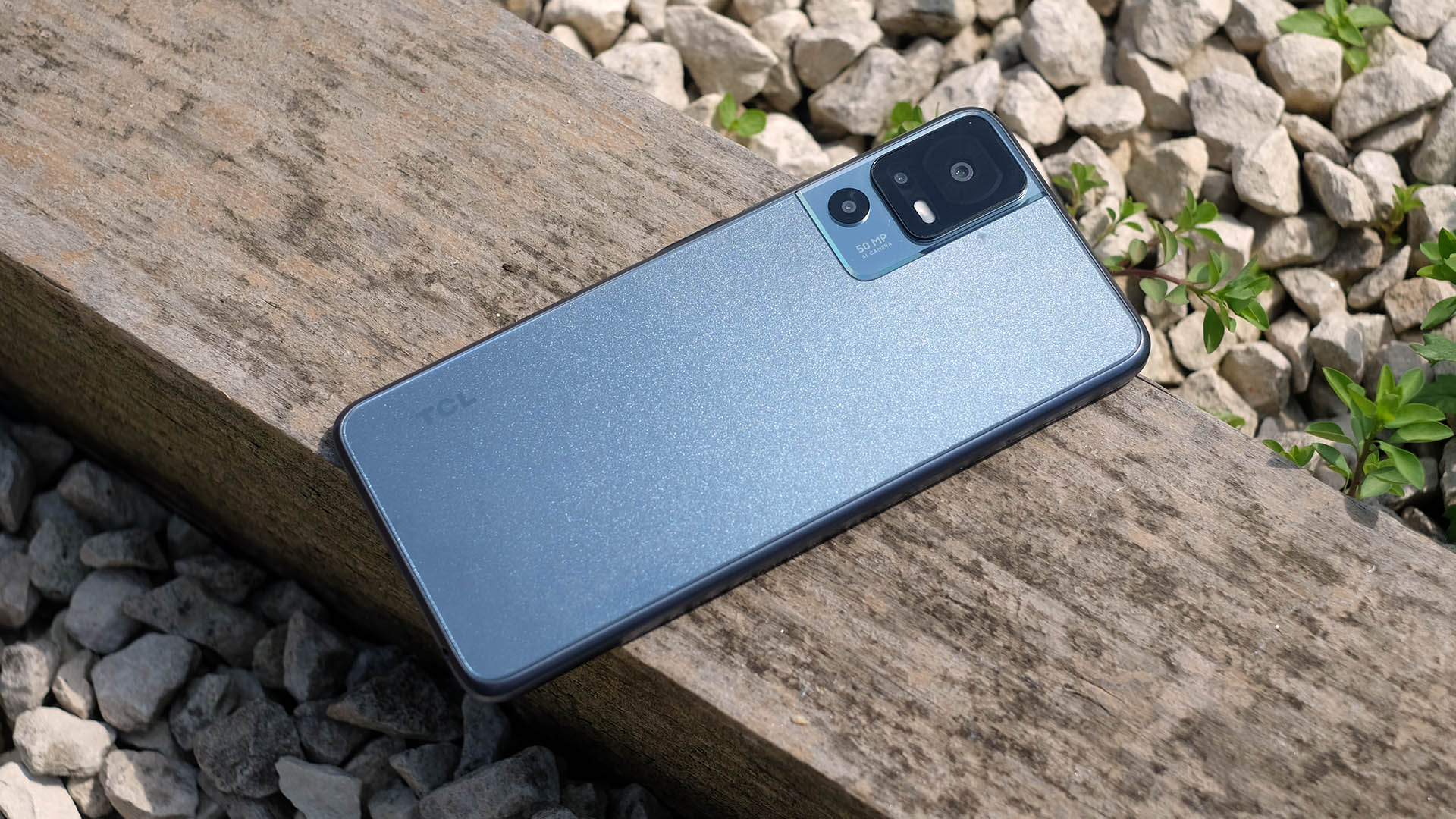
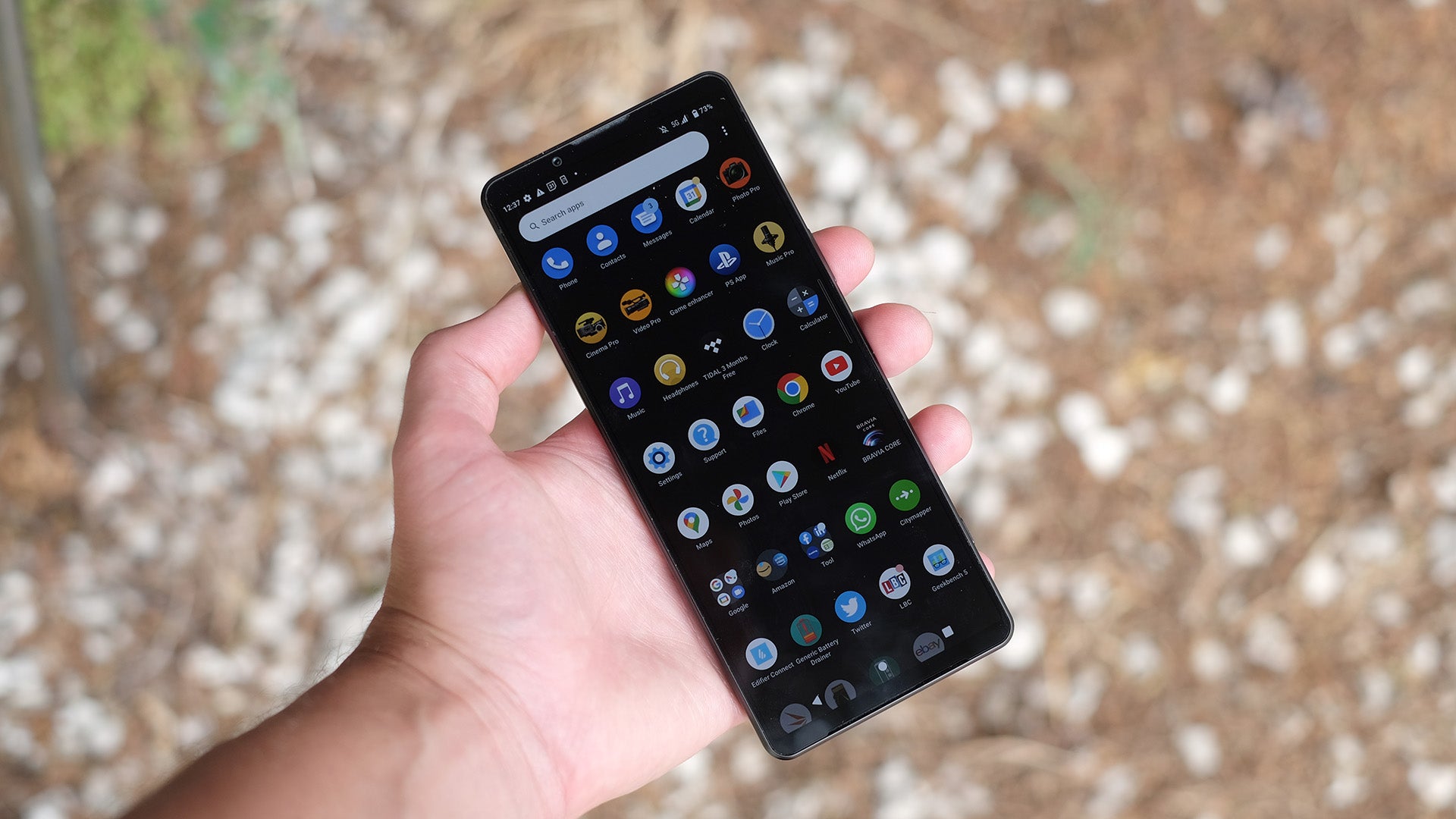
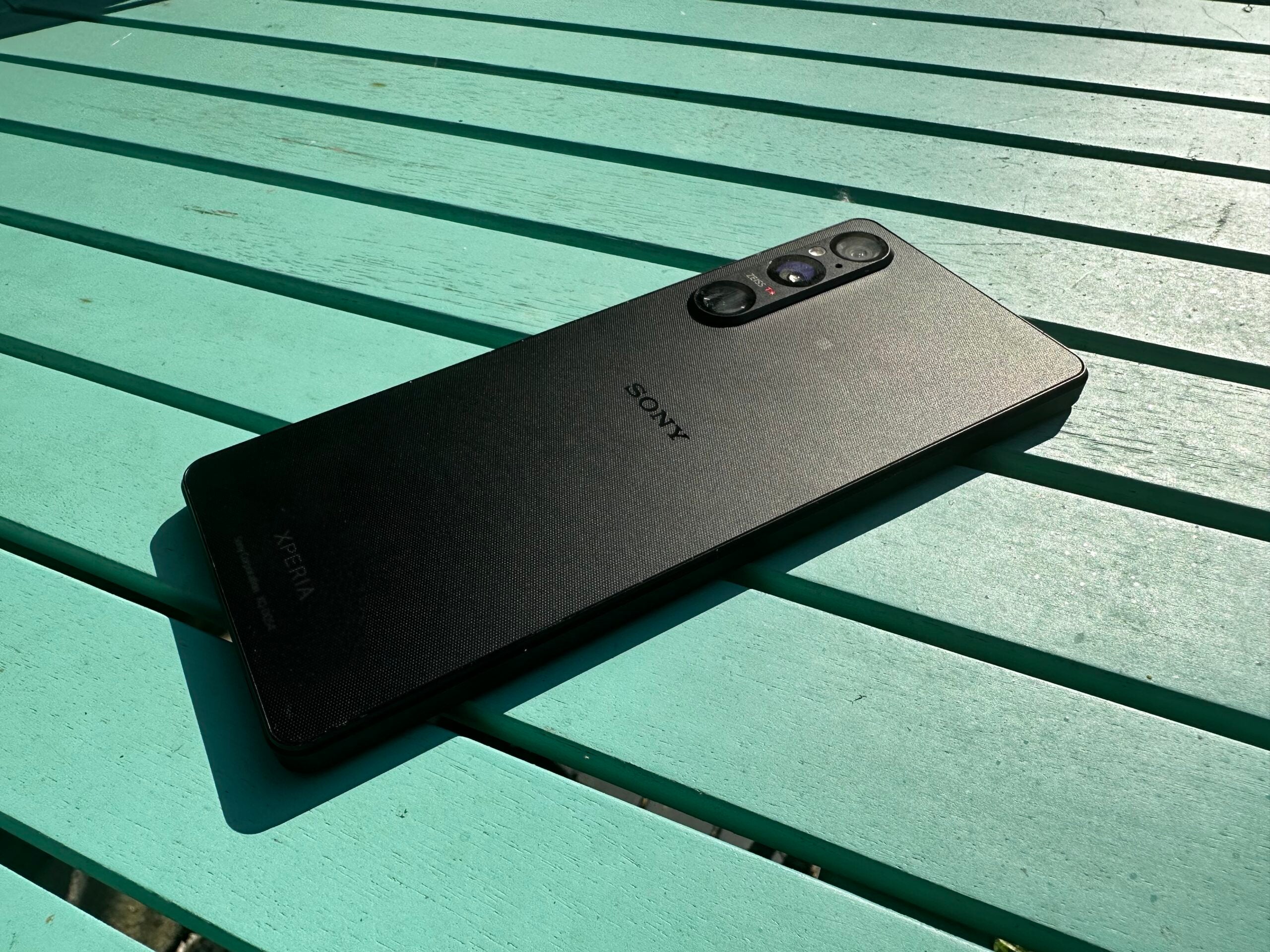

No comments